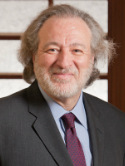Who Am I? Book Section
| Authors: | Lichtenthal, W. G.; Breitbart, W. |
| Editor: | Neimeyer, R. A. |
| Article/Chapter Title: | Who Am I? |
| Abstract: | Families of patients receiving hospice care, ready to begin the journey as personal historians embarking on a time-critical mission, can embrace this focusing process and the resulting transformative artifact that visualizes preferred stories. Patients may also take the lead recalling enlivening memories or be prompted to make corrections. To reclaim proof of love and loving acts, families can partake in dignity portraiture interviews, which explore the meaning, contribution or purpose of their loved one’s life. When conducted by a memory artist, this interview portion enriches the quality of life around the deathbed by cataloging nearly forgotten events once associated with great joy. The memory artist harnesses the phenomenon in order to imbue the viewer with a sense of ownership in generating positive memories. The implication is that the preferred story fabricated in consensus with patients and their families overlays memories of the deceased typically associated with grief and loss. © 2016 Robert A. Neimeyer. |
| Book Title: | Techniques of Grief Therapy: Assessment and Intervention |
| ISBN: | 9781315692401 |
| Publisher: | Taylor & Francis Group |
| Date Published: | 2016-01-01 |
| Start Page: | 182 |
| End Page: | 185 |
| Language: | English |
| DOI: | 10.4324/9781315692401 |
| PROVIDER: | scopus |
| DOI/URL: | |
| Notes: | Book Chapter: 32 |
Altmetric
Citation Impact
BMJ Impact Analytics
MSK Authors
-
 508
508Breitbart -
 119
119Lichtenthal
Related MSK Work


